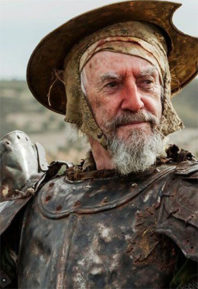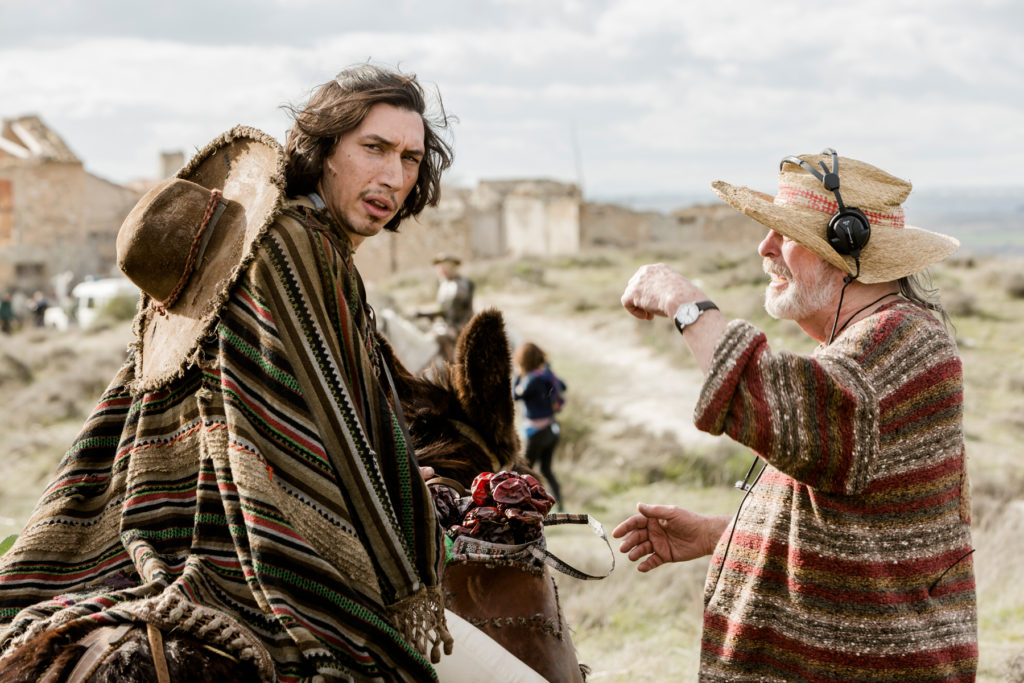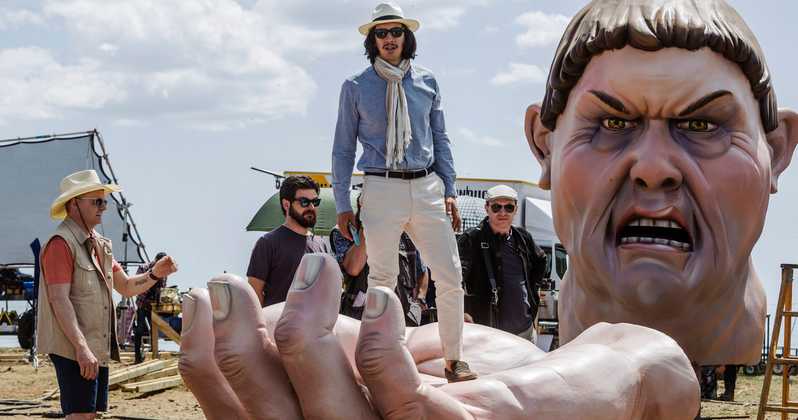
Spoilers Henceforth for “The Man Who Killed Don Quixote”
Time inevitably changes all. Artists are not immune to its effects, and in fact, may actually be one of the more affected groups. These changes usually result in varying forms of apprehension and derision. “The old stuff was better,” is frequently a popular refrain when appreciating the long-term careers of idiosyncratic artists.
For some of these artists, they too long for the, “good old days,” and spend the latter stages of their careers reflecting upon the changes they’ve undergone, and attempt to recapture the fountain of youth that was their early zest for artistry. Across the history of cinema this can be seen through the work of those such as Lars von Trier and Jean-Luc Godard, among others. Terry Gilliam is a director who it seems may have ultimately reached the, “my movies are about my movies,” stage of his career. His latest film, The Man Who Killed Don Quixote, is this week’s topic for Big Hot Mess. Through discussing this film as it exists now, and the nightmare that was the saga of making the film, we can see how projects can affect legacy conscious artists.
It is impossible to have a discussion on The Man Who Killed Don Quixote without partially touching upon the film’s legacy as one of the all-time most notable hellish productions. The final version of the film in fact recognizes this, as the film literally opens with a title card proclaiming that the experience you are about to embark upon is one that is over twenty-five years in the making. Specifically, Gilliam had been working on the film since as early as 1989 after reading the original Cervantes novel, coupled with the urge to adapt the film. This desire, I believe, needs situating in the context of Gilliam’s career. In 1989, he was just four years removed from Brazil, and had just made The Adventures of Baron Munchausen, films that had both struggled to pull in box office success despite critical acclaim. I imagine that Gilliam felt he needed to do something big to further his career, something like adapting an eight hundred plus page novel perhaps.
On the other side, the lack of financial success of Gilliam’s previous two features probably contributed to the film’s difficulty in securing funding. The varying attempts are numerous, and while all are fascinating, it might be more prudent to simply provide the highlights (there are still a lot of highlights). At one point the film was intended to be a straight adaptation of the original novel with Sean Connery as the titular Don, but was ultimately nixed after Gilliam claimed that “Quixote is air and Connery is earth.” By 1998, this eventually morphed into a semi-adaptation tentatively titled The Man Who Killed Don Quixote, and was going to be partially based off of the Mark Twain novel A Connecticut Yankee in King Arthur’s Court. Jean Rochefort was tapped to play Quixote, but was forced to drop out of the production after filming had started due to a herniated disk.

The Rochefort incident ostensibly cancelled production, prompting an insurance claim that resulted in the screenplay being passed on to insurance companies (this is important to know in consideration of plot points within the final version). Ultimately, this lead to a series of legal squabbles regarding who actually owned the right to the film, all while Gilliam released a companion documentary titled Lost in La Mancha detailing the difficulties in production that further complicated attempts to secure necessary funding. By 2016, the dream had been squashed umpteenth times, before producer Paulo Branco officially stepped on board to help provide roughly sixteen million euros necessary to complete the film.
While this allowed Gilliam to restart pre-production and re-cast the film (original actors such as Johnny Depp had lost interest in the project), Branco’s involvement proved to provide further complications. Branco ultimately demanded greater creative control, and when he did not get it, claimed that the final version of the film was “illegal.” This was after Branco refused to provide the necessary funds, prompting Gilliam to work with other producers. The official rights to The Man Who Killed Don Quixote were once again dragged into legal contention. This likely complicated the film’s eventual stateside distribution, which reached its widest release at just over seven hundred theatres.
Unfortunately, the reality behind the film is far more interesting than the film itself now that the film is finally here. I spent the majority of my viewing experience trying to consider why on earth Gilliam would fight so hard for a film that still feels unfinished. This is particularly noticeable during the film’s third act, which is bizarre and seems to be jamming in twists and turns for the sake of having twists and turns. The instant that the moving target that is the film’s antagonist, is revealed to be the villainous insurance broker (Jordi Mollá), who is also despicable towards love interest Angelica (Joana Ribero), is where the film begins to unravel. The thematic set-ups of earlier largely come unglued as the film progresses towards its madcap conclusion.

The most engaging aspect of The Man Who Killed Don Quixote is one that ultimately is deemed superfluous in terms of the film’s conclusion. Adam Driver’s Toby Grison, an advertising executive who discovers that the location for a recent project is mere minutes from a village where he shot his magnum opus student film, feels very much like a proxy for Gilliam himself. As of this post, the director is 78 years old, and has to be at least partially considering the legacy of a four decade career. Driver’s journey to reconcile with what he’s become, a soulless corporate shill, is partially what the film is about, and is difficult to not be seen as a personal statement. But again, by the time the madcap third acts rolls around, this is a journey that is strangely deviated from. That Driver ultimately takes up the Quixote mantle from Javier (Jonathan Pryce) after his death, feels like a wasted opportunity. Could the film be better served by Toby rediscovering his artistic passion?
The answer to this question is probably. I believe a film more focused on the thematic realities of artistic soul-searching in inherently better than a wacky adventure, or at least provide a more meaningful experience. This belief, however, misses the point of why Gilliam has structured his film this way. Ultimately, I can’t shake the feeling that The Man Who Killed Don Quixote becomes about the power of imagination, precisely because Gilliam does not want massive parallels between his film and its production; and while these comparisons are inevitable, he can undermine them by refocusing the film. Any mention of artists, insurance, soul-searching, and the past, are likely to draw up whispers of how this is all a giant meta-commentary on the making of the film itself. The first half is filled with moments like these, hence why the eventual endpoint feels so far removed.

Thus, Gilliam likely wishes for The Man Who Killed Don Quixote to stand on its own. At the same time, it might also be likely that the film feels unfinished precisely because it is. At a certain point, one may reach a state where they just simply wish for something to be done. It’s possible that the closer Gilliam got to the end, the more he became aware of that fact. This, it should be noted, is all pure conjecture. I am not accusing Gilliam of quitting on his project, but rather, I am suggesting that the second he found an ending he felt was palatable, he stuck with it. And more power to him. If he’s satisfied enough with the ending, it’s his prerogative to use it.
What we often forget about messy films and messy projects, is that they likely also take a toll on the artists who make them. It cannot have been easy for Gilliam to constantly start, stop, and re-start a project that he so clearly felt passionate about, and that was nearly taken away from him countless times. That kind of gumption should be commended. At the same time, it’s difficult to watch this and get the sense that this is ultimately the final version he wanted. Sometimes the mess remains unfinished.

